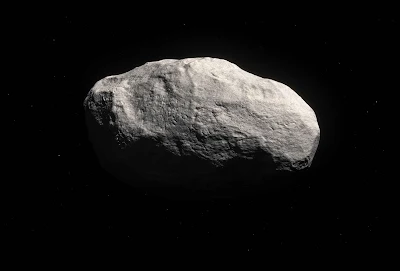Για
πρώτη φορά εντοπίζεται τέτοιο σώμα χωρίς την χαρακτηριστική «ουρά» ύλης. Where’s
the tail? Credit: University of Hawaii Institute for Astronomy
Το
2014 το δίκτυο τηλεσκοπίων Pan-STARRS εντόπισε ένα άγνωστο μέχρι σήμερα κομήτη ο
οποίος έλαβε την κωδική ονομασία C/2014
S3.
This illustration
shows the most likely orbit for Comet C/2014 S3 (Pan-STARRS), the first-ever
object found to be on a long-period cometary orbit. The comet's current orbit
takes 860 years to complete one trip around the sun. Credit: ESO/L. Calçada
Νέες
παρατηρήσεις που έκανε ομάδα αστρονόμων σε αυτόν αποκάλυψε ότι διαθέτει ένα
μοναδικό στο είδος του χαρακτηριστικό.
This image of the
weird tailless Comet C/2014 S3 (Pan-STARRS) was made from observations by
scientists using the European Southern Observatory's Very Large Telescope and
the Canada-France Hawaii Telescope. It is the first rocky comet ever found,
scientists say. Credit: K. Meech (IfA/UH)/CFHT/ESO
Δεν
διαθέτει την χαρακτηριστική ουρά που έχουν όλοι κομήτες η οποία αποτελείται από
διάφορα είδη ύλης όπως σκόνη ή ιόντα νερού από την εξάχνωση του πάγου του
κομήτη.
Scientists have
discovered a new type of comet, one that is nearly tailless like a Manx cat, that
may be a leftover chunk of the same stuff that formed the Earth billions of
years ago. The newfound comet, shown here in an artist's depiction, is
returning from the Oort cloud at the solar system's edge. Credit: ESO/M.
Kornmesser
Ο
κομήτης ονομάστηκε «Manx»
που είναι το όνομα μιας ράτσας γατών χωρίς ουρά. Οι ερευνητές που έκαναν την
ανακάλυψη αναζητούν τώρα και άλλους… κολοβούς κομήτες.
Δείτε
ένα βίντεο για τον κομήτη που δεν διαθέτει ουρά. Observations with
ESO’s Very Large Telescope, and the Canada France Hawaii Telescope, show that
C/2014 S3 (PANSTARRS) is the first object to be discovered that is on a
long-period cometary orbit, but that has the characteristics of a pristine
inner Solar System asteroid. It may provide important clues about how the Solar
System formed. This video shows the probable history of this object in both the
inner and outer Solar System over a period of more than four billion years. Credit:
ESO/L. Calçada
Εκτιμούν
μάλιστα ότι η μελέτη του Manx
και άλλων τέτοιων κομητών θα προσφέρει νέα στοιχεία για τον σχηματισμό και την
εξέλιξη του ηλιακού μας συστήματος. Η ανακάλυψη δημοσιεύεται στην επιθεώρηση «Science Advances».




























